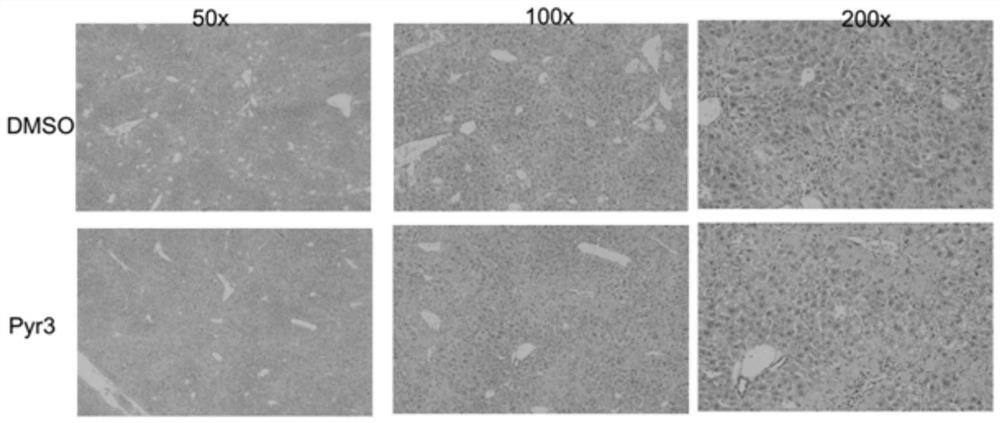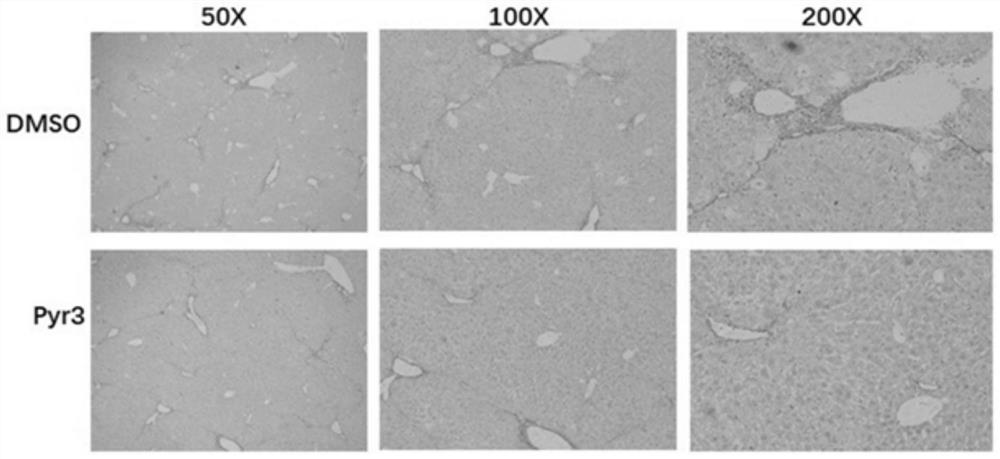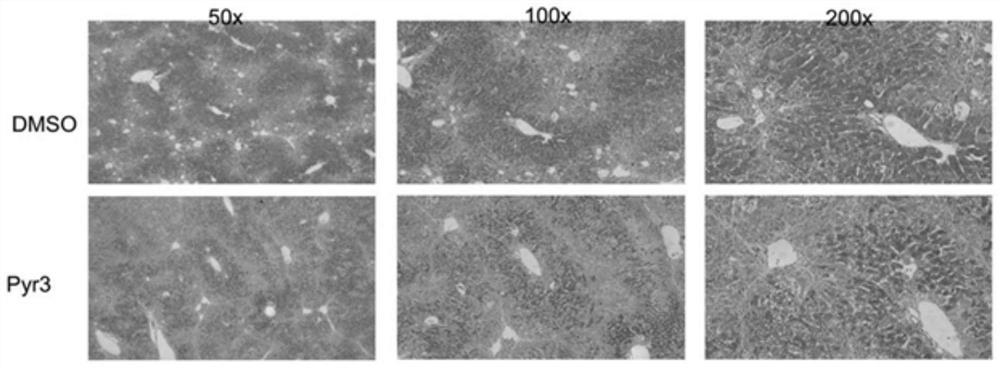Application of pyr3 in the preparation of drugs for protecting liver damage
A technology for liver damage, chemical liver damage, applied in the field of medicine
- Summary
- Abstract
- Description
- Claims
- Application Information
AI Technical Summary
Problems solved by technology
Method used
Image
Examples
Embodiment
[0038] Build using CCl 4 Induced hepatic fibrosis model in C57 mice on an all-wild-type background. Six-week-old C57 mice were intraperitoneally injected with carbon tetrachloride (CCl4)-olive oil (1:4) (hereinafter referred to as CCl4) at 5 ml / kg body weight. 4 ), twice a week for 8 weeks; C57 mice were randomly divided into Pyr3 (TRPC3 inhibitor) group and DMSO control group at the 7th week from the beginning of modeling. The mice in the Pyr3 (inhibitor) group were injected intraperitoneally with 10 mg / kg of Pyr3 for 2 weeks, twice a week; for 2 weeks, twice a week; at the same time, the mice in the DMSO control group were injected with the same volume of DMSO solvent. 48 hours after the last injection, the mice were anesthetized and sacrificed and blood and liver samples were collected. (Note: DMSO is an organic solvent for dissolving Pyr3.)
[0039] After collecting mouse liver paraffin-embedded sections, H&E staining (Solarbie, Beijing, China, Ca#G1340), Sirius Red Sta...
PUM
 Login to View More
Login to View More Abstract
Description
Claims
Application Information
 Login to View More
Login to View More - R&D Engineer
- R&D Manager
- IP Professional
- Industry Leading Data Capabilities
- Powerful AI technology
- Patent DNA Extraction
Browse by: Latest US Patents, China's latest patents, Technical Efficacy Thesaurus, Application Domain, Technology Topic, Popular Technical Reports.
© 2024 PatSnap. All rights reserved.Legal|Privacy policy|Modern Slavery Act Transparency Statement|Sitemap|About US| Contact US: help@patsnap.com










